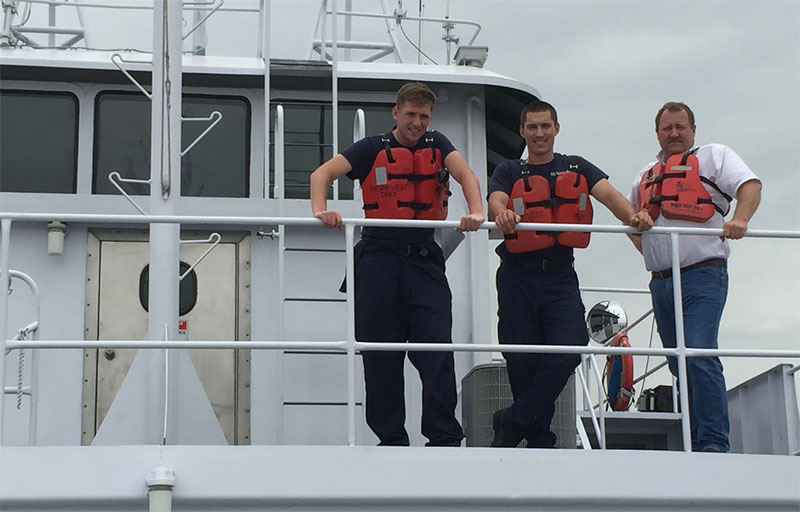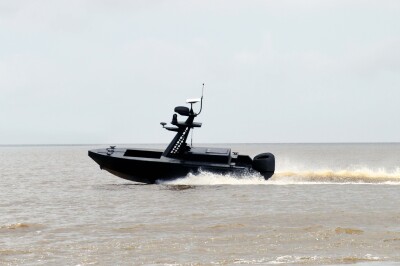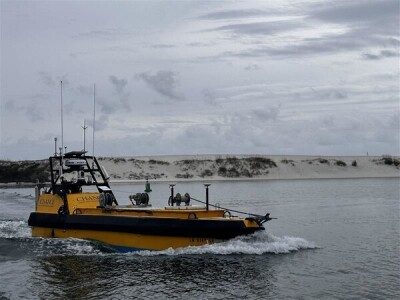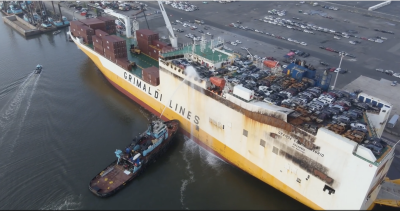A new crop of cadets from the Coast Guard Academy — whose traditional focus has been on bluewater vessels — is preparing to tackle life on brownwater this summer.
Six cadets will be working with commercial inland towing companies under the Coast Guard Academy Cadet Towing Vessel Rider Program, which has been exposing future Coast Guard leaders to inland river navigation since 2012. The idea was hatched in a conversation in 2011 between WorkBoat and now Vice Admiral Sandra Stocz, who at the time was just joining the academy as superintendent.
Cadets interested in becoming marine safety officers receive hands-on experience on tugboats, towboats and barges, as well as a taste of shoreside operations for up to 10 days each summer. The program has been so successful over the past four years that the USCG and the American Waterways Operators, whose member companies offer training on their vessels, has extended the partnership indefinitely.
This summer, cadets will be traveling on vessels for Blessey Marine Services and Canal Barge Co., in New Orleans, and Kirby Offshore Marine in Houston.
Cadets get real-world experience that helps them become “more aware of the impact of Coast Guard rules, regulations, policies and procedures on the operations of the towing industry,” said Commander Daniel Cost, who has organized the program at the academy.
This knowledge is becoming especially important this year, as the Coast Guard will be rolling out the much-anticipated federal towing vessel regulation program, Subchapter M. Many of these young cadets could eventually oversee implementation of this safety program, which is one of the most important regulatory mandates the towing industry will face.
“The (rider) program has proved extremely popular with AWO member companies and their crew members, who enjoy the opportunity to introduce cadets to the industry and build relationships with the Coast Guard’s future leaders,” said Caitlyn Stewart, AWO’s Senior Manager of Regulatory Affairs.
Before joining the towing companies, cadets attend an Inland Rivers Orientation Course, which explains the types of boats, the terms, and river system, and provides case studies of vessel operations, Cost said. Cadets already have experience on Coast Guard cutters, so are schooled in basic safety at sea and damage control training.
Mary McCarthy, manager of Quality Systems at Canal Barge, says her vessels will host two female cadets beginning July 5 after the pair completes a stint at Harvey Gulf.
“We will do a day of orientation in the New Orleans office on the industry and CBC, and connect them with the staff at the Eighth Coast Guard District and Sector New Orleans," McCarthy said. "Then they ride one of our 6,000-hp towing vessels on the inland river system for about a week and a half.”
A 2015 cadet, Alyssa Milanese was assigned to the Kirby Offshore ATB Dublin Sea. Her tasks included plotting, standing helm, familiarizing herself with certificates and safety plans and learning how to line up the cargo system before loading and discharge, testing the steering system and helping cook for the crew. In her evaluation of the experience, shared with me by Cost, Milanese recommended that Coast Guard Marine Inspectors be offered similar experiences on an ATB.
“The insight, discussion and relationships that I built with the crew members will help me become a better prevention officer in the future and can develop the present inspectors as well,” she wrote.
Cadet Jaime Davis, who aims to become a prevention officer, spent time on the Kirby ATB Pacific Wolf last summer. He wrote that the experience helped him better understand why the Coast Guard must be familiar with the industry and the vessels that it regulates.
"Knowledge and experience is power within the filed of inspections, and I feel that I gained a great deal of both while underway with the relatively unknown ATBs," Davis wrote.
“The crew communicated that some of them have had negative experiences with the Coast Guard because the Coast Guard does not necessarily know what it is like to be on these types of boats,” he explained. “The crew saw my presence as a means to train one of their future Coast Guard inspectors, so they took their mentorship jobs seriously.”
The rider program is just one of many other efforts that the Academy has undertaken to expose cadets to commercial shipping. With a nudge from Congress, more marine safety professional studies are being offered, as well as summer training in marine inspection. This mission has grown even more important as vessels, offshore platforms and port facilities grow in size and complexity.
In the end, it’s a win-win situation for everyone, so welcome aboard, cadets.





